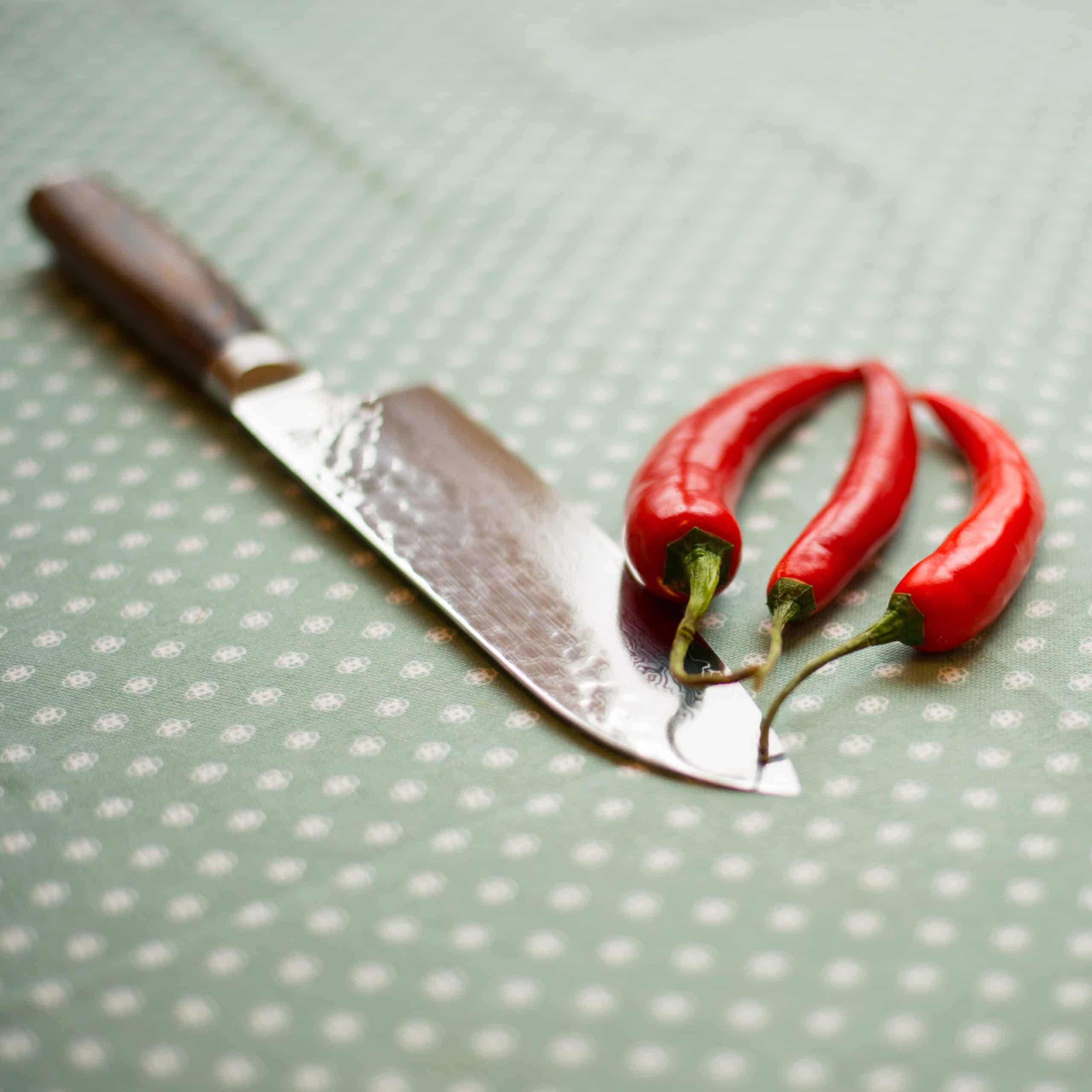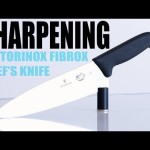
Introduction
The folding knife is one of the oldest tools used by mankind, found in archaeological digs dating as far back as 500BC. As knives were one of the most significant man-made tools of the time, they quickly evolved into more practical designs that could be conveniently carried and used in everyday life. Modern folding knife design is heavily influenced by classic pocket knife patterns from centuries ago, especially those from pioneering knife makers in Europe. Examples include traditional French ‘Navaja’ folding knives (as early as 1790), British penny knives and hedgehog pocket knives, German beer pocket knives, Swiss Army Knives (1891), and even more modern styles such as American Case Gentleman’s Lockbacks (c. 1910). While these old-fashioned designs were relatively crude compared to today’s standards, their basic form can still be seen in many modern folders.
Essential Parts of a Folding Knife:
When it comes to discussing folding knife anatomy there are several essential parts we must cover in order to properly understand what makes up a typical folder. These components range from essentials like the spring assembly, main body/blade scale, handle clip, and open linerlock to cosmetic features like bolstered guards, pivots or handles scales featuring hand made artwork or intricate designs. Here is a brief overview of each element:
Spring Assembly – This part contains the torsion bar which allows the blade to easily deploy when pressed on with your thumb. This mechanism also serves to keep the blade securely closed once folded away in its handle.
Main Body/Blade Scale – Usually two pieces made from robust material like titanium or G-10, this component houses both the blade and spring assembly when closed but exposes them when opened up for use. Different handles scales can also offer different levels of grip for better handling under wet conditions or other environments where higher traction might be desired.
Handle Clip – On many folders, this small piece acts as an extra securing measure; it attaches over a portion of the blade’s tang so that it cannot dislodge unintentionally due to jostling or vibration between pockets or bags while carrying it around. It also serves double purpose smaller models allowing them to hang inverted from a buttonhole in clothing while still maintaining their secured position within clothing during movement.
Crate Linerlock – This security feature consists of a thin metal latch that buttresses against an opening side portion of the blade’s tang; its actuation allows users to unlock their foldable blades either through manual pressure on said latch or due pressing on an exposed portion of its tab as implemented on some assisted opening folders like Benchmade Axis locking series models.
Bolstered Guard/Other Handcrafted Features – Some folders contain portions made from softer metals such as brass which help reinforce their body parts in addition helping secure them against potential splitting due excesses flexing between heavy duty applications such improve overall durability without making them too bulky for pocket carry whilst offering further value adds through ornate sculpted guard assortments shaped onto blades themselves leveraging artisanship like forge Damascus steel making processes when optimized with integrated liners creating eye-catching heirloom grade instruments meant appreciate every time deployed into action whether indoors outdoors
Types of Folding Knives
Folding knives come in a variety of shapes and sizes, each suited to its specific task. The most common blades are the drop point, clip-point, and tanto. The drop point is shaped similarly to a large drop of water, with a curved spine that terminates at an angle on the blade’s tip. It is designed for slicing and piercing tasks such as skinning game and cutting fruits. The clip-point has a “clip” along the spine of the blade eliminating material from the front, making it ideal for stabbing and piercing tasks like opening boxes or cutting rope. The tanto style has both a straight edge and chisel tip designed specifically for targeted piercing tasks such as shattering glass.
The lock mechanism on folding knives provides protection against accidental closure while in use by keeping the blade securely open when desired. Common types of locks include frame lock, liner lock, back lock, compression lock and Axis Lock. The frame locks up against the back spine of the handle when open; Liner locks use two metal plates to press onto either side of the tang when opened; Back locks clamp down directly onto a notch on the spring bolster when opened; Compression locks use resistance along with one moving spring bar to keep it shut; Lastly Axis Locks came after Kershaw’s patented locking mechanism using dual omega springs mounted around a steel axis bar.
Anatomy of a Folding Knife
The folding knife is one of the most popular outdoor tools for wilderness adventurers around the world. The anatomy of a folding knife requires an in-depth look at both the handle and blade components.
The handle of a folding knife usually consists of two parts. They are the frame and the scales. The frame often features finger grooves on either side to provide a better grip and increased control when using the knife. The scales are typically made from wood, plastic or resin and they fit overtop of the frame, providing strength and resilience against wear and tear.
As for the blade of a folding knife, it’s composed of several different pieces: tang, bolster, ricasso and swedge. The tang is affixed within the handle area and runs behind it completely as it hooks into place with either pins or rivets. The bolster is a band that runs along one side of the blade, helping to balance out its center point while also providing more support to users’ hands from sharp blade edges. The ricasso acts as an extended cutting surface below the bolster where users can safely place their fingers when slicing through material; this region is sometimes referred to as ‘the belly’. Lastly, a swedge is a beveled edge that narrows near its spine which helps decrease weight on guns or knives used for hunting purposes.
Popular Designs
One of the most popular designs for folding knives is the one-hand deployment or the “tactical” or assisted-opening knife. These knives feature a spring-assisted mechanism that utilizes either a thumb stud or flipper to open the blade quickly and easily with one hand. They are ideal for when you need your other hand free. Popular brands that produce these types of folding knives include Spyderco, Benchmade, Kershaw, CRKT, and Boker.
Another popular design for folding knives are slip joint folders. These knives operate without any mechanical assist and rely on careful counterbalance to the handle’s natural springiness to keep them closed. Norman Dahm’s Knife Company produces some exquisite examples of traditional slip joint folders like their NDM Gentlemen’s Lockback and Pigeon series featuring Barber & Wroe’s signature split backspring design.
Other types of folding knife styles include frame lock, liner lock, button lock, plunge lock ,and back locks, all of which have different mechanisms but function much like the Tactical and Slip Joint options mentioned above. Popular folders that utilize these kinds of locking mechanisms include those produced by Zero Tolerance (ZT) as well as Protech Knives who have pioneered many high-end innovations in modern folder materials over the last decade.
Materials Used in Folding Knives
Folding knives rely on a combination of materials for their construction. Understanding the different types of materials used to make handles and blades, as well as how to care for them, can help you make an informed purchase when selecting a new folding knife.
Blade Materials: Edge retention is a key factor in choosing a good blade, and a wide range of materials offer varying levels of durability. Stainless steel is often a popular option, as it offers plenty of rust resistance and strength compared to others. Carbon steel has excellent blades with greater hardness than stainless versions but requires more maintenance due to its higher tendency to corrode. Damascus steel knives have intricate beauty because of the layered material composition usually made up of multiple metals combined for better cutting edge performance. High carbon tool steel also offers longer-lasting edges, while titanium is corrosion resistant yet surprisingly lightweight and strong.
Handle Materials: Folding knives are available in many handle material options such as aluminum, G10 (plastic), rubber, wood, bone and micarta (compressed linen). Each material provides its own unique characteristics including weight, grip feel and durability. Aluminum handles offer greater strength and affordability whereas plastic can be injection molded into any shape desired with little cost. Wood presents an attractive look while providing solid support plus excellent comfort when held in-hand while rubber can provide grip in wet conditions. Bone is another lighter option that’s relatively durable compared to others however some may argue that bone fits better on larger handle profiles due to the fragility of natural bone over time from use or exposure to ultraviolet energy found in sunlight. Finally, micarta offers both beauty and temperature control characteristics so you don’t get burned if your knife gets too hot or cold during use outdoors.
When caring for your folding knife, always pay special attention to the blade material require certain precautions such as immersing stainless steel blade blades in oil after using them in wet environments or keeping carbon blades dry after each activation/cut make sure they are protected from unnecessary oxidation snd associated discoloration; cleaning abrasive residues with warm water; avoiding harsh cleaners; storing carefully when not in use; avoiding prolonged exposure to sunlight; wiping off excess moisture with a clean cloth directly after use; lubricating regularly with synthetic oils etc. With proper maintenance, folding knives should remain functional for many years ahead!
Maintenance
Cleaning: Your folding knife should be cleaned and maintained on a regular basis. Depending on how often the folding knife is used, it may need to be cleaned more or less frequently. To clean a folding knife, use a damp cloth and some dish soap to remove any dirt, dust, or debris that has built up on the blade and handle.
Lubrication: After cleaning your folding knife, you should lubricate it in order to maintain its performance levels and prevent excess wear and tear. A light application of machine oil should be spread evenly over the entire surface of the folding knife with particular attention being paid to the pivot area (where the blades are opened). Use an old toothbrush or cotton swab for placement into small areas such as around the screws. Once applied, open and close the mechanism several times to ensure adequate distribution of oil. Finally, wipe away any excess oil before storing or returning your folding knife back into operation
Safety
Folding knives are among the most common tools available, with various models in use across a wide range of applications – cooking, camping, hunting, and more. Many folding knives have moving parts inside them which are prone to breaking if handled carelessly or used improperly. Thus it is imperative that users of folding knives pay special attention to its anatomy so they can safely handle and use it for their intended purpose.
In order for responsible use of a folding knife to take place, safety measures must be implemented. To begin with, all folding knives need to be kept out of the reach of children and other untrained persons who may not be aware of its potential danger. Sharp blades should not be exposed while carrying the Knife since this may inadvertently leave someone injured if mishandled.
It is equally important that users are knowledgeable about how to open and close the folders without putting their hands in harm’s way. Some models may have locks that require a specific technique or pressure points on the plates which will prevent accidental opening when gripped firmly. Finally knife owners must always stay mindful that depending on their model some locking mechanisms could fail without warning especially after prolonged or intensive use so caution must be exercised at all times when using it.
Conclusion
Folding knives are a great tool to add to your everyday carry. With a sturdy and reliable blade, easy to open mechanism, and the ability to fit into small spaces, folding knives can prove to be incredibly useful. Whether you’re cleaning out your nails at the office, cutting open an envelope, or prepping food for dinner, having a quality folding knife on hand can help you get the job done with ease. Thanks to advances in engineering and materials science over the past few decades, many folding knives on the market today are even ergonomically designed to provide you with optimum comfort when in use. Not only are these tools practical and reliable but their sleek designs mean that they also look stylish too. With all the brilliant features of modern folding knives – from durable materials to easy-to-use mechanisms – it’s no wonder that these small tools have become so popular among modern users who appreciate quality and convenience in one package.















